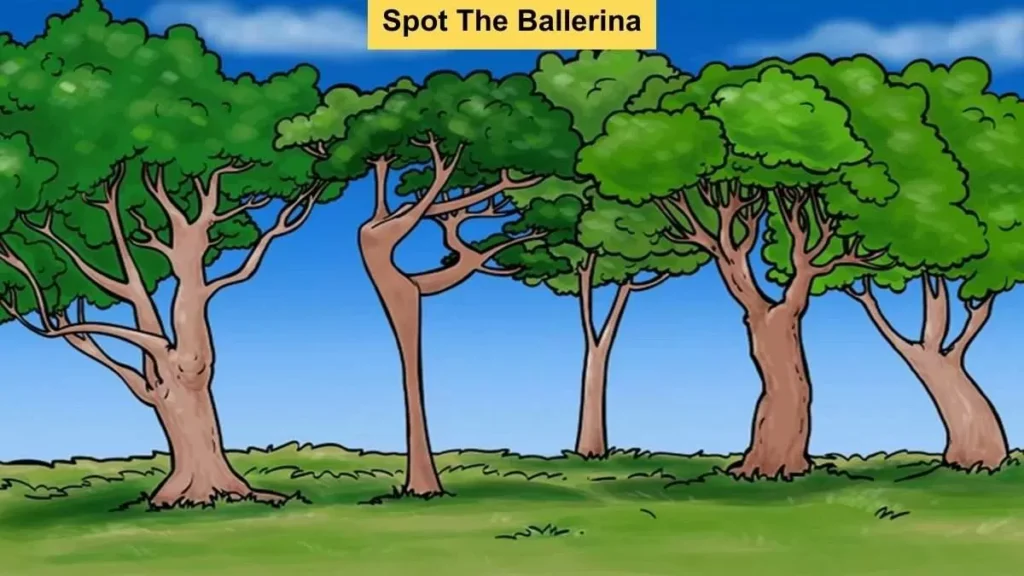Optical illusions have always captivated human curiosity, challenging our perception and understanding of the world around us.
From ambiguous images to mind-bending illusions, they continue to intrigue and amaze.
One such intriguing phenomenon is the Ballerina in Trees optical illusion, which has gained attention for its ability to confound the senses and test our visual acuity.
In this article, we delve into the fascinating world of optical illusions, explore the science behind them, and take on the challenge of finding the elusive ballerina hidden within the trees.
Understanding Optical Illusions

Before we embark on our journey to uncover the hidden ballerina, let’s first grasp the concept of optical illusions.
These perceptual phenomena occur when our brains misinterpret sensory information, leading to discrepancies between what we see and what actually exists in reality.
Optical illusions exploit various visual cues, such as perspective, color, and depth perception, to create deceptive images that trick the mind.
The human visual system is remarkable but susceptible to manipulation.
Our brains rely on a combination of sensory input and past experiences to interpret the world around us.
However, this interpretation isn’t always accurate, especially when presented with conflicting or ambiguous stimuli.
Optical illusions exploit these vulnerabilities, revealing the intricacies of perception and cognition.
The Ballerina in Trees Illusion
The Ballerina in Trees illusion is a prime example of how our brains can be deceived by visual stimuli.
The illusion consists of an image depicting a dense cluster of trees against a vibrant sky backdrop.
Amidst the foliage, hidden within the branches and leaves, is a silhouette resembling that of a ballerina in mid-pose.
The challenge? To spot the ballerina within seven seconds.
At first glance, the image appears to be a simple landscape scene, but upon closer inspection, the elusive ballerina emerges, blending seamlessly with her arboreal surroundings.
The illusion plays tricks on our perception, testing our ability to discern shapes and patterns amidst complex visual stimuli.
The Science Behind the Illusion
To understand why the Ballerina in Trees illusion captivates our attention and challenges our perception, we must delve into the science behind visual processing.
Our brains are adept at detecting patterns and familiar shapes, a skill honed through evolution to navigate our environment and identify potential threats or resources.
When presented with the image of trees, our brains automatically search for recognizable objects or figures, a process known as pareidolia.
Pareidolia is the tendency to perceive meaningful patterns or shapes, such as faces or animals, where none exist.
In the case of the Ballerina in Trees illusion, our brains may initially overlook the silhouette of the ballerina, instead focusing on the natural elements of the scene.
However, as we scrutinize the image, our brains begin to decipher the contours and outlines of the hidden figure, gradually revealing the ballerina’s form.
This process relies on visual attention and selective perception, as our brains filter out irrelevant information to focus on the task at hand.
The time constraint of seven seconds adds an element of urgency, heightening the challenge and increasing the pressure to spot the ballerina before time runs out.
The Role of Attention and Perception
Attention plays a crucial role in how we perceive and interpret visual stimuli.
In the case of the Ballerina in Trees illusion, directing our attention to specific areas of the image can influence our ability to detect the hidden figure.
By focusing on the patterns and shapes within the foliage, we increase the likelihood of spotting the ballerina amidst the trees.
Perception, on the other hand, involves the interpretation of sensory information to construct a coherent understanding of our surroundings.
The Ballerina in Trees illusion demonstrates how perception can be influenced by context and expectation, as our brains attempt to make sense of the ambiguous stimulus presented to us.
Cognitive Factors at Play
In addition to attention and perception, cognitive factors such as memory and decision-making also impact our ability to solve visual puzzles like the Ballerina in Trees illusion.
Our brains draw upon past experiences and knowledge to interpret the image, using memory to recall familiar shapes and patterns that may aid in the detection of the hidden figure.
Decision-making comes into play as we assess the visual information presented to us and formulate a response within the time constraints of the challenge.
The pressure to identify the ballerina quickly can influence our decision-making process, leading to rapid assessments and judgments based on incomplete information.
The Challenge: Can You Pass?
Now that we’ve explored the science behind the Ballerina in Trees illusion, it’s time to put our visual acuity to the test.
Take a moment to prepare yourself, then focus your attention on the image and try to locate the hidden ballerina within seven seconds.
[Insert image of the Ballerina in Trees illusion]
Did you succeed in finding the ballerina within the allotted time?
If so, congratulations! Your keen observation skills and ability to discern patterns have served you well.
If not, don’t be discouraged – optical illusions like this one are designed to challenge even the most astute observers.
Conclusion
The Ballerina in Trees illusion exemplifies the fascinating interplay between perception, cognition, and attention in shaping our understanding of the visual world.
By exploring the science behind optical illusions and undertaking challenges like this one, we gain valuable insights into the complexities of human perception and the remarkable capabilities of the human brain.
So the next time you encounter an optical illusion, remember to approach it with curiosity and wonder, and marvel at the mysteries that lie hidden within the mind’s eye.
